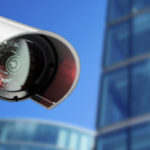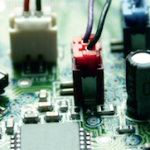Within theory of knowledge, . it is common to distinguish between explicit- and implicit knowledge. Sometimes the term ”silent knowledge is used”. What is silent knowledge within EMC?


Within theory of knowledge, . it is common to distinguish between explicit- and implicit knowledge. Sometimes the term ”silent knowledge is used”. What is silent knowledge within EMC?

The use of wireless . technology has exploded in recent decades and has led to the fact that most individuals today use such technology in some form. This is also a general trend in other parts of the society, such as security and safety applications and for machine-to-machine (M2M) communication. We can also see rapidly increasing use of wireless technologies in critical societal functions such as energy production, transport, logistics, banking and financial systems, and industrial and security applications. This despite the fact that civilian wireless technologies are very sensitive to electromagnetic interference signals.

Radiation Paths and cable-to-cable coupling . This is the 4th article of our EMC awareness series. The former articles, after a broad overview of the EMC subject, reviewed the principal Civilian and Military Norms and test methods, insisting on the legal inforcement of these verifications in Europe, where they are turned into mandatory, « must-comply » laws. Given that source/coupling path/victim concept is the basic approach to EMC, most of the time it is the coupling path between the culprit source and the victim equipment wich is the crux of the problem, hence of its solutions. The 5 essential coupling mechanisms were listed, by which EM Interference take place. Although any equipment can be alternately the victim, or the source, of an EMI problem, we focused on EM susceptibility as being the manifestation that appears first in the designer’s or field engineer’s worries.

An efficient and repeatable measurement method for determining shielding effectiveness of cable feedthroughs based on the use of nested reverberation chambers is presented. The measurement method is validated by comparing measurements on an isolated conductor penetrating the shield with a simple theory based on basic circuit theory in combination with antenna theory. The agreement between measurements and simulations is very good in the considered frequency range 400 MHz to 4 GHz. Measurement results for commercially available cable feedthrough are also presented.

In certain applications it is of highly importance to be able to identify unintentional pulsed interference sources. One reason is that this kind of interference can cause severe performance degradation of modern digital wireless communications. In this paper we show that pulsed interference sources can be identified by standard radiated emission measurements performed in the frequency domain.

Part 1: Conduction Paths . As briefly described in our introductory Article N°1 ( Issue #2-2015 of EE Magazine), ElectroMagnetic Interference is a Source/Coupling Paths/Victim situation, the basis for an overall understanding of EMI control in order to reach a satisfactory level of compatibility (EMC). We also said that reducing the interference at the source itself, or at the victim’s levels, were most of the time unpractical. Therefore, the only remaining area for action is in general the coupling path, which implies understanding the coupling mechanism.

Most designers . and installers of electrical equipment agree that shielded cables are a good way to achieve EMC. But many times I have seen big money thrown ”down the drain” because of overconfidence to the cable shield effects and ignorance of its proper use and design.

The number of mobile . subscriptions in the world is now as large as the number of people. To ensure future market growth, the mobile industry is working towards a vision that will make today’s use of mobile communications look like a mere starter.

Robotic lawn movers, . small autonomous robots, are becoming more and more popular in the gardens. With a minimum effort the garden is kept tidy, without the noise and emissions from a petrol engine. But how about EMC-related emissions then? And will the lawn mower co-exist with other products?

An editor´s reflections . Sometimes EMC issues result in dilemmas where conflicting needs / requirements need to be addressed.